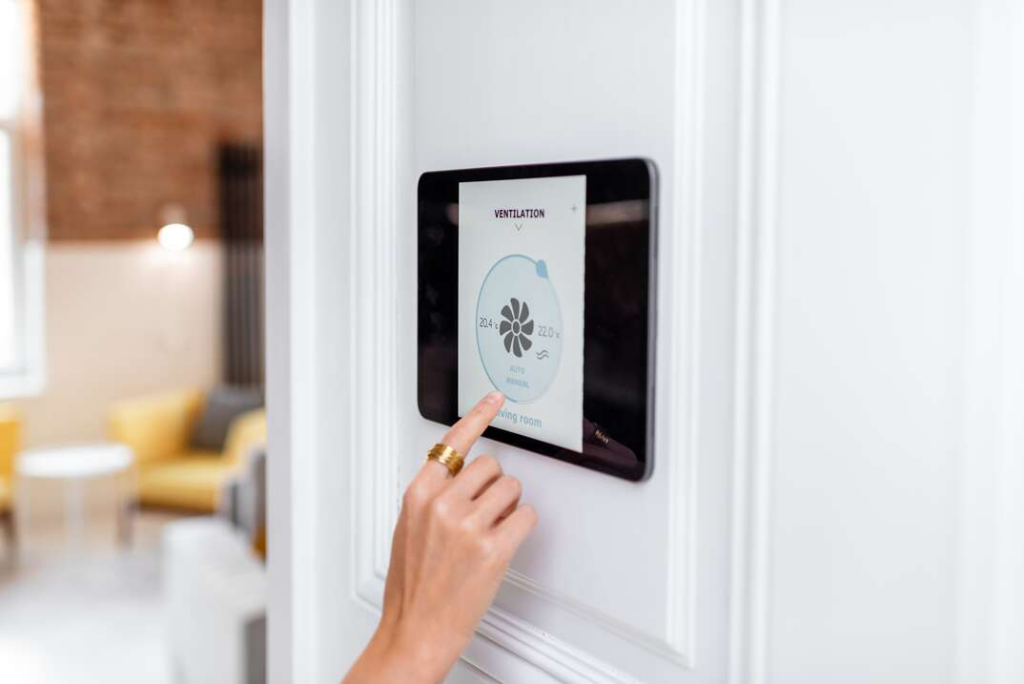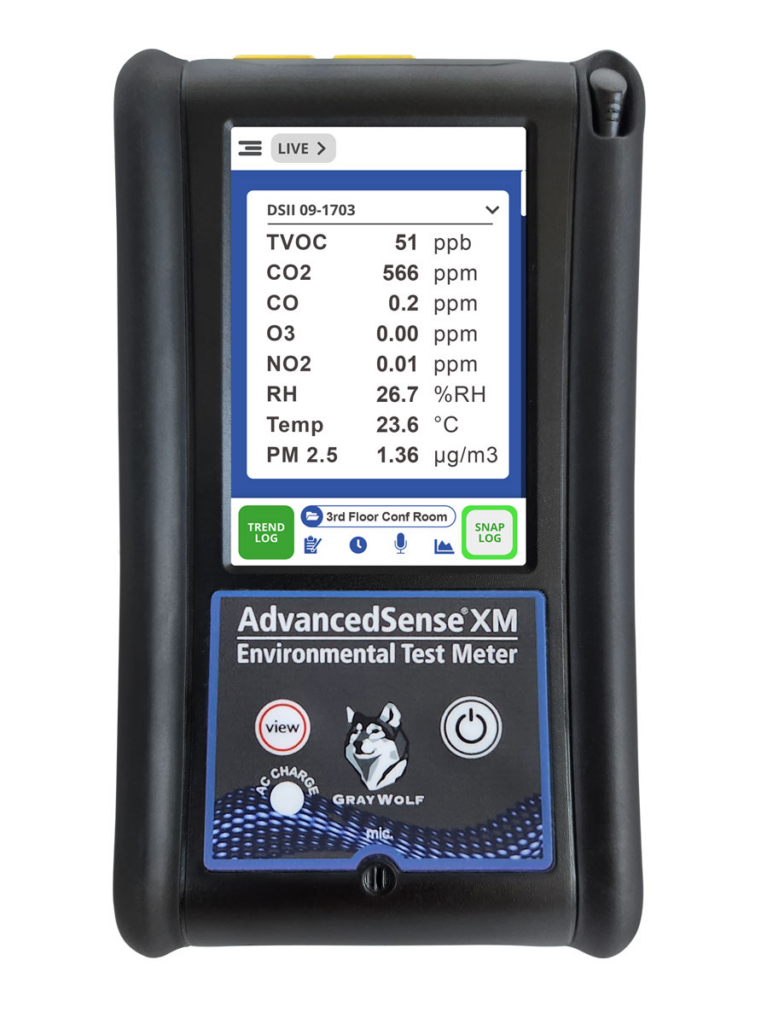Introduction
When the heat is on, we often focus on cooling the air – but what about the quality of the air we’re breathing indoors? Summer and hot weather can bring specific indoor air quality (IAQ) challenges: higher humidity, increased pollen and allergens, even pollutants creeping in from outside. Smart HVAC sensors and systems can play a big role in monitoring and improving your indoor air quality during these hot spells. In this post, we’ll look at the types of smart sensors available and how they help keep your indoor air fresh, clean, and healthy even when it’s sweltering outside.

The Challenge of Hot Weather Air Quality
- High Humidity: Hot weather often means high humidity, especially in many regions. Humid indoor air feels uncomfortable and can promote mold or mildew growth.

- Allergens and Pollen: Summer brings pollen, and if you have windows open, it can get inside. Even with AC on, pollen can slip in or be drawn in through small leaks.

- Ozone and Pollution: Hot sunny days can increase outdoor ozone levels. Plus, if there’s wildfire smoke or increased pollution, keeping it out of your home is important.

- Stagnant Air: In efforts to cool down, people sometimes recirculate indoor air and seal up the house, which can make indoor air stale if not managed.

Smart sensors help tackle these issues by monitoring conditions and sometimes triggering automatic responses.
Types of Smart HVAC Sensors
- Temperature and Humidity Sensors: Nearly all smart thermostats have temperature sensors, and many include humidity sensors. These let the system know how humid it is inside and can activate cooling or dehumidification features.

- Air Quality Sensors (IAQ sensors): These can detect particles (like dust, pollen), Volatile Organic Compounds (VOCs), or CO2 levels. For example, the Ecobee Smart Thermostat Premium has a built-in air quality sensor that monitors VOCs and CO2 to give a general “air quality” metric.

- Smart Ventilation Sensors: Some systems have sensors that measure outdoor air quality or ventilation effectiveness. They can decide when to bring in fresh air or not.

- Standalone IAQ Monitors: Devices like Awair or Foobot are smart air quality monitors that measure things like PM2.5 (fine particulates), CO2, VOCs, humidity, etc. While not part of the HVAC system themselves, they can often integrate or at least alert you (or your smart thermostat if integrated via platforms like IFTTT) to air quality issues.

How Sensors Improve Air Quality

- Smart Humidity Control: If sensors detect high humidity (say your indoor humidity goes above 60% in summer), a smart thermostat can kick on the AC a bit more to dehumidify or activate a dehumidifier if you have one connected. Some HVAC systems have a “dry mode” or dehumidification setting that smart controls can use. Keeping humidity in check (around 50% or less) makes it harder for mold and dust mites to thrive and just makes the air feel more comfortable.
- Ventilation Adjustments: Smart sensors can control ventilators or HRV/ERV systems. For instance, if indoor CO2 levels climb (maybe a sign of stuffy air), the system can bring in more outside air provided the outside air isn’t too hot or polluted. Conversely, if outdoor air quality is poor (smoke, high pollen count), a smart system might recirculate indoor air to avoid bringing in pollutants.
- Filtration on Demand: If your system has an integrated air purifier or high-quality filter, sensors could trigger the fan to run more when poor air quality is detected. For example, some smart thermostats will increase fan circulation if their sensors pick up a spike in particles or VOCs, thereby cycling air through filters more frequently. This can be great after cooking (to clear smoke/odors) or on a bad air day outside.
- Alerts to Homeowners: Even if the system doesn’t fully automate a response, having sensors means you get notified. If your IAQ monitor says “High VOCs detected” or your thermostat app warns “Indoor air quality poor right now,” you can take action: open a window (if outside is better), run a purifier, turn on kitchen/bath exhaust fans, etc. Knowledge is power – and these sensors give you the information you need to improve your air.
Hot Weather Scenarios

- Pollen Season Summer Day: You have windows closed and AC on to keep pollen out. Your smart thermostat’s air quality sensor still sees a bump in particles each time the door opens. It kicks on the HVAC fan for an extra 15 minutes every hour, filtering air through a high-MERV filter you installed. It also keeps humidity at 45%. Result: You breathe easier, with less sneezing, and the house doesn’t feel muggy.
- Humid Heatwave & Mold Prevention: It’s August, 95°F and very humid. Your thermostat keeps the home at 75°F but notices indoor humidity creeping up to 60%. It automatically cools a bit more in short bursts to drop humidity to 50%, then returns to setpoint. If you had a whole-home dehumidifier, it would activate that instead. This prevents that damp, musty feeling and growth of mold in corners or basements.
- Wildfire Smoke Event: You get an alert on your phone from your indoor air monitor that particle levels are rising. You glance outside and see a haze – wildfire smoke blew into the area. You activate “Smoke Mode”: your HVAC system closes fresh air intakes, and your portable air purifier (smart plug connected) turns on high. Your HVAC fan also runs continuously to cycle air through its filter. The indoor air quality improves while the outside is smoky.
- CO2 Buildup in Sealed Home: It’s super hot out, so you haven’t cracked a window in days. You’ve got a full house (maybe a gathering or just a big family). An IAQ sensor notices CO2 climbing, indicating stale air (people breathing, not enough fresh air). If you have an ERV, it kicks on to bring in fresh air despite the heat (maybe pre-cooling the incoming air). If not, at least you get an alert and can decide to open a window in evening when it’s cooler. This keeps everyone more alert and comfortable (high CO2 can cause drowsiness/headaches).
Choosing Smart Sensors/Systems

- Thermostat Features: If IAQ is a priority, consider a thermostat with built-in sensors (Ecobee Premium, for example). It simplifies things.
- Add-on Monitors: If you want detailed data, get a separate IAQ monitor. Many can integrate with smart home systems, so you could create your own automation (e.g., if AQI > 100 then turn on air purifier).
- Smart Purifiers & Humidifiers: Look for those that integrate too. Some smart purifiers can adjust speed based on air quality readings. If they connect to Alexa/Google, you can incorporate them into routines triggered by sensor readings.
Conclusion
Smart HVAC sensors are like the senses of your home, constantly feeling out the environment to maintain not just the right temperature, but also clean and healthy air. In hot weather, when air quality challenges peak due to humidity, allergens, and more, these sensors really prove their worth. They enable your cooling system to do double duty: cooling and cleaning the air.
By investing in a smart thermostat with IAQ sensors or supplementary air quality monitors, you equip your home to automatically respond to changing air conditions. It’s a great way to ensure that when you’re hiding from the heat indoors, you’re breathing easy and staying healthy.
